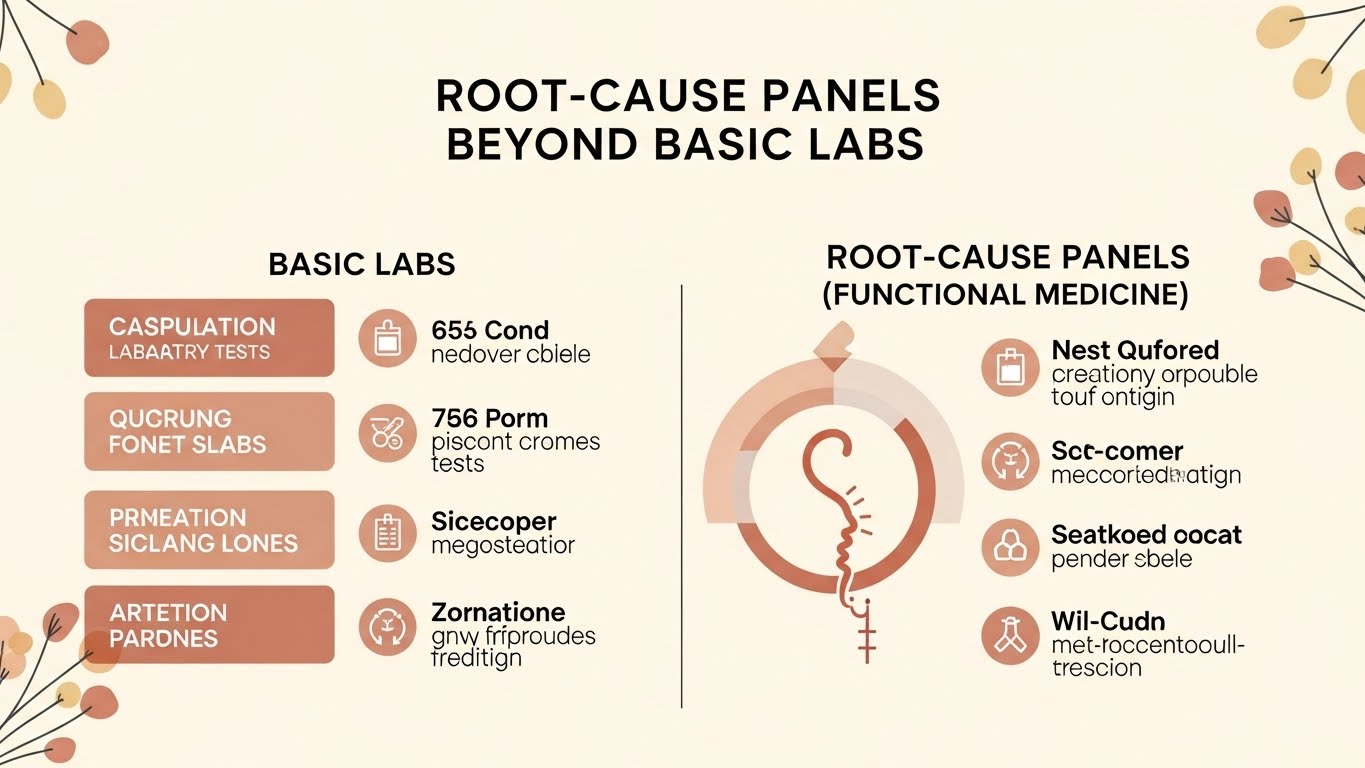GENERAL
DMX and LED Lighting: Understanding Digital Multiplex Control and Its Impact

The DMX system represents one of the most advanced lighting control technologies, and it has become the primary standard for contemporary applications. DMX represents a common term found in LED lighting discussions yet remains unclear to people who lack understanding of its technology definition and operational principles. An led tape light dmx system allows precise control over brightness, color, and effects, making it ideal for dynamic lighting displays. The standardized protocol DMX stands for Digital Multiplex, which controls lighting effects across stage productions, architectural lighting applications, commercial displays, and home automation systems. DMX operates as a crucial modern lighting system component because it allows users to control numerous fixtures simultaneously with both precision and flexible control.

The Origin and Development of DMX
In 1986, USITT established the DMX512 protocol to solve problems that plagued earlier lighting control systems. The adoption of DMX introduced a new era in lighting control systems because analog signals previously used extensive wiring and produced unreliable results. The installation of lighting fixtures became complicated because each fixture required its own specific control line.
DMX introduced a digital communication system enabling controllers to control multiple fixtures through one unified data cable. Standardization of lighting systems through DMX led to simplified setup processes and enhanced reliability along with extended programming potential. The development of DMX technology has extended its original theater-based usage to become an essential control system for numerous industries that need precise lighting management.
How DMX Works in LED Lighting
The digital protocol DMX functions as a communication system that directs controllers to send signals that control lighting fixtures for intensity levels, color selection, and movement patterns. The standard setup for DMX includes a controller unit and DMX-enabled fixtures, which are linked through data cables to exchange instructions. The protocol manages communication through a step-by-step packet system that controls the various functions of connected fixtures.
The standard DMX system works through 512 channels, which enables the control of 512 separate parameters across each universe. Each lighting device receives data from its assigned address within the universe and understands its intended instructions but ignores data meant for other fixtures. The structured design allows designers to build intricate lighting setups because every fixture executes commands exactly as programmed.
LED lighting benefits from DMX control through its ability to provide users with extraordinary control over brightness settings, color temperature adjustments, and dynamic effects operation. The RGB and RGBW LED strips obtain their wide color range, and fluid lighting transitions through DMX signal control. DMX proves most suitable for applications needing automated and coordinated lighting displays because it allows users to synchronize various lights and effects.
Benefits of LED Lighting Systems
The main benefit of using DMX control for LED lighting systems is its ability to deliver exact and customizable control over numerous fixtures. With DMX, users can easily program their lighting sequences and automate transitions between effects because this system eliminates the need for manual adjustments. Stage productions greatly benefit from this advanced control function since it ensures perfect synchronization between lighting effects, musical performances, and stage effects.
DMX implements dimming and scheduling features that improve energy efficiency. The DMX compatibility of LED fixtures enables programmers to set intensity levels that manage power usage while preserving appropriate lighting conditions. The architectural lighting industry uses this capability to program building and monument illumination following specific patterns and event schedules.
DMX provides scalable operations, which is a significant advantage. The DMX protocol enables users to control either small LED fixture collections or extensive venue-wide lighting networks through a system that provides easy integration and growth capabilities. The DMX protocol enables control of numerous lighting parameters through multiple universes, which makes it suitable for large productions, concert events, and commercial installations.

DMX Applications Beyond Entertainment
The entertainment industry created DMX, but today, it serves purposes that exceed live performance illumination. Building facades, bridges, and landmarks get dynamic color-changing effects through architectural lighting designers who employ DMX technology. The implementation of DMX-controlled LED fixtures in urban environments enables cities to generate spectacular nighttime scenes, which simultaneously improve their public areas and attract tourists.
Retail businesses utilize DMX-controlled lighting because adjustable schemes through DMX enable behavior modification among customers while making their displays more noticeable. DMX controls allow stores to set ambiance lighting and create highlight effects that both improve customer shopping experiences and spotlight particular merchandise. DMX controls the lighting systems of restaurants and hotels alongside event venues to help them build distinctive settings that match their brand personality.
Modern residential smart home automation systems now use DMX-compatible LED lights to enable homeowners to customize their lighting environments. The sophistication of residential lighting has increased through DMX technology, which enables users to modify living space illumination and match outdoor lights with music or seasonal elements.
Understanding DMX Addressing and Configuration
Novice users of DMX need to learn how to properly address and configure their lighting fixtures on a DMX network. Every DMX-compatible light needs a starting address to specify the data stream section it will process. The proper planning of addressing becomes essential because fixture types need multiple channels to handle brightness, color, and movement controls while ensuring no address conflicts occur.
Real-time updates of all connected fixtures occur through the continuous data stream from a DMX controller system. Programmers who work with DMX-controlled LED lighting systems benefit from interfaces between software controllers and hardware consoles that enable user modifications and preset storage along with automated sequence control. Applications that need dynamic lighting effects, such as stage shows and multimedia installations, depend heavily on this flexible system.
Conclusion
The Digital Multiplex system (DMX) transformed LED lighting control through its ability to deliver precise control and flexible operation in multiple industries. DMX started its life in theater staging before spreading across architectural spaces and commercial buildings and finally reaching residential areas. The tool provides essential capabilities to manage various fixtures alongside dynamic effect generation and smart lighting integration for designers and lighting professionals. DMX technology will advance alongside technological progress through the implementation of wireless capabilities, IoT integration, and novel lighting effects. DMX-controlled LED lighting stands as a versatile tool for creating mesmerizing visual effects since it can light up stages at concerts or improve building exteriors and retail environments.
GENERAL
Functional Medicine Laboratory Test Explained: Root-Cause Panels Beyond Basic Labs

Persistent fatigue, digestive discomfort, or simply not feeling well: these conditions remain undiagnosed and unknowingly become a part of life. The result is a hindrance in reaching your full potential as the body is busy coping with the issues.
The key to solving the problem is right identification. Where conventional lab reports come out to be normal, it is the functional medicine lab tests that help uncover the root cause of unexplained feelings of not being well. Does the term ‘functional medicine’ sound new to you? Or have you heard it but are unsure what it actually means? We explain the details here while relating how it upgrades the quality of life. Scroll down to know.
What is Functional Medicine?
Functional medicine is a root cause based approach to healthcare. Instead of only treating symptoms, it focuses on why a health issue is happening. It achieves this by understanding how different systems of the body, such as the gut, hormones, immune system, metabolism and genetics, are connected with each other.
The functional medicine focuses on:
- Impact of the diet, lifestyle, stress, environment and genetics on health
- Individual differences rather than one-size-fits-all treatment
- Long-term healing instead of temporary symptom suppression
Understand this with an example: If a patient faces acid reflux or bloating, the common approach is to treat with antacids. Functional medicine identifies whether the issue is coming from gut infections, poor digestion, inflammation or food sensitivities.
What Are Functional Medicine Laboratory Tests?
Functional medicine laboratory tests are advanced diagnostic tests. They help identify early imbalances and hidden dysfunctions before they turn into disease. Generally, these tests assess:
- Hormonal balance: To identify hormonal imbalances and manage the symptoms concerning heavy and painful periods, infertility, weight gain, migraines and more.
- Gut health: To identify abundance and diversity of harmful and beneficial microbes, including bacteria, viruses, parasites, fungi and others. It helps deal with chronic conditions, skin issues, inflammation, autoimmune disorders and more.
- Genetic tendencies: To recognise the body’s capability to process and metabolise fat and carbohydrate, risk of chronic diseases, optimise power, endurance and recovery, and more. It helps achieve peak fitness, manage weight, improve mental health and more.
- Immune response: To know about compounds (such as food) sensitive to the body and to learn about gut permeability.
- Nutritional profile: To identify the deficiencies of antioxidants, minerals, B-vitamins, digestive support, fatty acids, amino acids, and omega-3, 6, and 9 in the body.
Importance of Functional Medicine Laboratory Tests
The functional medicine approach plays an important role in achieving well-being for the individual. Here is how the approach works beyond the basic lab tests to help patients feel good:
Helps Uncover Root Causes of Chronic Symptoms
Functional medicine lab tests are useful for people dealing with chronic medical conditions such as chronic fatigue, digestive problems, autoimmune conditions or unexplained symptoms. These tests provide insight into more detailed aspects of the body at the foundational level. Interpreting them offers enough information to handle the mentioned problems.
Detects Issues Missed by Conventional Testing
The functional medicine lab tests reveal underlying imbalances such as nutrient deficiencies, hormonal dysfunctions, hidden infections, or inflammation related triggers. Many of these imbalances may not appear in standard lab ranges. Using these insights helps reduce symptoms and improve body functionality, thus offering relief.
Enable Early Detection and Prevention
The functional medicine lab tests allow timely identification of gut dysbiosis, allergic foods, antioxidant or fatty acid deficiencies, bacterial and fungal toxins, and much more. It involves testing in the scenario of discomfort before the problems progress into more serious conditions. The timely interventions, like lifestyle, dietary, or nutritional adjustments, support long-term health.
Guides Personalised and Targeted Interventions
Test results are interpreted by practitioners in combination with various individual aspects, including but not limited to existing lifestyle, previous medical history, previous drug responses, symptoms, and other details. Subsequently, the professionals develop a tailored plan based on individual needs to provide relevant and measurable interventions.
Tracks Progress and Treatment Effectiveness
Further insights through follow-ups about the personalised plans ensure the effectiveness of the suggested modifications. Depending on the progress and results, the adjustments can be made. Hence, it supports a proactive and evidence-based approach to health management.
Comparison Between Standard Laboratory Tests and Functional Medicine Laboratory Tests
The differences between standard or conventional laboratory tests and functional medicine laboratory tests are as follows:
| Parameter | Conventional Laboratory Tests | Functional Medicine Laboratory Tests |
| Primary focus | Diagnosis of existing disease and acute conditions | Optimising functional well-being and early imbalance detection |
| Approach to health | Reactive, i.e., it involves taking action once disease markers appear | Proactive, i.e., identification of the early signs of dysfunction before disease develops |
| Personalisation | Limited personal context | Interpreted as per the individual biochemistry, lifestyle, and health goals |
| Examples of tests | Complete Blood count (CBC), lipid panel, basic thyroid tests, and others | Gut health tests, hormone panels, nutrient status, and more |
| Outcome | Confirms presence or absence of disease | Guides targeted interventions to maintain and improve health |
Conclusion
Functional medicine laboratory tests offer comprehensive and deeper insights into the body’s functionality. They allow early diagnosis and personalised intervention to offer relief from discomforts that are challenging to understand with conventional tests. The functional medicine focuses on gut health, nutrition, hormones, immune response, and genetic tendencies, among others, to identify the root causes. Also, it works on a proactive approach, helping the individual feel better and confident.
GENERAL
Quick Enrollment Steps for Your Next MyCPR NOW Course

When it comes to getting certified in CPR, First Aid, or BLS, MyCPR NOW makes the process quick, easy, and accessible. Whether you’re a student, caregiver, or healthcare worker, enrolling in a certification course has never been simpler. Below, we’ll walk you through the quick and easy steps you need to take to get started with your next MyCPR NOW course.
Step 1: Visit the MyCPR NOW Website
The first step to enrolling in a MyCPR NOW course is to visit the official website: MyCPR NOW. On the homepage, you’ll find a clean and user-friendly interface that will guide you to the courses you need.
Whether you’re looking for CPR certification, First Aid, or more advanced courses like BLS (Basic Life Support), everything is clearly listed, so you can easily find the course that suits your needs.
Step 2: Choose the Right Course for You
Once you’re on the site, you’ll need to browse through the available courses and select the one that best fits your needs. MyCPR NOW offers several certifications, including:
- CPR
- First Aid
- CPR + First Aid
- CPR + First Aid + Bloodborne Pathogens (BBP)
- BLS
- Pet CPR + First Aid
Depending on your profession or personal requirements, you can choose a single certification or a combination. For example, if you’re a healthcare professional, you might need BLS certification, while a teacher or caregiver may only need CPR + First Aid.
Step 3: Create an Account (Optional)
Creating an account is optional, but it offers several benefits. By registering, you can track your progress, access your courses easily, and receive your certification upon completion.
To create an account:
- Click on the “Sign Up” or “Create Account” button.
- Enter your basic details, including your name, email, and preferred password.
- You can also register via social media accounts for even quicker access.
Once your account is created, you’ll have access to your dashboard, where you can start your course and track your progress as you move through the material.
Step 4: Make Your Payment
After selecting your course, you’ll be directed to the payment page. MyCPR NOW offers flexible payment options, including credit/debit cards and other secure payment methods.
The cost of each course varies depending on the certification you choose, but there are often discounts or bundles available if you’re enrolling in multiple courses. Rest assured, the payment process is fast and secure, ensuring your personal information is protected.
Step 5: Start Your Course
Once your payment is complete, you can immediately begin your course. You’ll gain 24/7 access to the course materials, which include interactive videos, slides, and quizzes.
The courses are self-paced, meaning you can study at your own convenience and revisit any section as needed. Whether you prefer to learn in the morning, at night, or over weekends, MyCPR NOW makes sure the learning process fits into your busy schedule.
Step 6: Complete the Exam
At the end of each course, there will be an exam that tests your knowledge and ensures that you’ve learned the necessary skills. Don’t worry about time limits; the exams are designed to give you the flexibility to complete them at your own pace. To pass, you generally need to score at least 80%.
If you don’t pass on your first try, MyCPR NOW allows you to retake the exam at no extra charge. This ensures you have every opportunity to succeed and obtain your certification.
Step 7: Receive Your Certification
Once you pass the exam, you will receive your certification immediately. MyCPR NOW will email you a digital certificate, which you can print or save for your records. The certification is generally valid for 1 year, after which you may need to renew it depending on the course and your employer’s requirements.
Step 8: Keep Your Skills Up to Date
After receiving your certification, it’s important to stay updated with any new techniques or guidelines. MyCPR NOW offers refresher courses or renewal options so you can keep your knowledge fresh and continue to provide life-saving assistance when needed.
Why Choose MyCPR NOW?
MyCPR NOW offers a variety of benefits that make the enrollment and learning process as seamless as possible:
- Self-Paced Learning: Study on your own time, at your own speed.
- 24/7 Access: Learn anytime, from anywhere, and complete your course at your convenience.
- Interactive Learning: Engage with videos, slides, and quizzes for a comprehensive learning experience.
- Retake Exams for Free: If you don’t pass the first time, you can retake the exam at no additional cost.
- Instant Certification: Receive your digital certificate as soon as you pass the exam.
Final Thoughts
Enrolling in a MyCPR NOW course is simple and efficient. By following these quick steps, you’ll be well on your way to receiving your CPR, First Aid, or BLS certification in no time. Whether you need it for your job, personal life, or community involvement, MyCPR NOW ensures that you have the skills and knowledge to handle emergency situations.
GENERAL
Exploring pantagonar: The Hidden Gem of Sustainable Living

Nestled away from the hustle and bustle of mainstream destinations, Pantagonar awaits those in search of a unique escape. This hidden gem is not just a place; it’s a lifestyle rooted in sustainability and community. Imagine exploring lush landscapes while savoring organic meals crafted from local produce. Picture engaging with friendly locals who prioritize the planet’s health as much as their own.
Pantagonar offers an experience that transcends typical tourism. Whether you’re an adventurous soul or someone seeking tranquility, this enchanting locale has something special for everyone. Dive into its rich history, vibrant culture, and commitment to sustainable living — your journey begins here!
What is pantagonar?
Pantagonar is a vibrant community nestled in the heart of nature. It’s not just a place; it embodies a lifestyle rooted in sustainability and harmony with the environment.
Here, residents prioritize eco-friendly practices while celebrating their unique heritage. The atmosphere brims with creativity, from artisanal crafts to organic farming.
Visitors often find themselves enchanted by its lush landscapes and warm-hearted locals. Each corner tells a story of tradition merged with modern ideals.
With an emphasis on reducing carbon footprints and promoting green initiatives, Pantagonar stands as a beacon for those seeking refuge from urban chaos. Its commitment to preserving natural beauty makes it an ideal destination for conscious travelers looking to connect with nature.
The essence of Pantagonar lies in its ability to inspire change while fostering community spirit—making it more than just another stop on the map but rather a movement toward sustainable living.
History and Culture of Pantagonar
Pantagonar boasts a rich tapestry of history and culture, woven from the threads of ancient traditions and modern influences. Originating as a small community nestled in nature’s embrace, it has evolved into a vibrant hub for sustainable living.
The locals take pride in their heritage, celebrating annual festivals that highlight traditional music, dance, and crafts. Each event serves as a reminder of the deep-rooted connection between the people and their environment.
Artisans thrive here, showcasing unique handmade goods inspired by both historical motifs and contemporary designs. This blend creates an atmosphere where creativity flourishes.
Additionally, storytelling remains integral to Pantagonar’s culture. Elders share tales passed down through generations around communal fires. These narratives reflect not only history but also values such as respect for nature and community spirit.
Every corner reveals remnants of its past – from quaint architecture to local legends waiting to be discovered.
Sustainability in Pantagonar
Sustainability thrives in Pantagonar, where nature and community coexist harmoniously. The region is dedicated to preserving its lush landscapes while promoting eco-conscious practices.
Local farms employ organic methods to cultivate crops. This not only protects the environment but also enhances food quality. Residents prioritize composting and recycling, reducing waste significantly.
Energy solutions are equally impressive. Solar panels adorn rooftops across the area, harnessing sunlight for power and minimizing reliance on fossil fuels. This shift contributes to a cleaner atmosphere.
Water conservation techniques are integrated into daily life as well. Rainwater harvesting systems capture precious rainfall for irrigation purposes, ensuring resources remain plentiful even during dry seasons.
Community workshops educate residents about sustainable living practices too. Engaging citizens fosters a culture of responsibility towards the planet’s future—and everyone benefits from that shared vision of stewardship.
Farm-to-Table Dining Options in Pantagonar
In Pantagonar, dining is an experience deeply rooted in the land. The farm-to-table movement thrives here, connecting visitors with local farmers and fresh ingredients.
Restaurants showcase seasonal produce, often sourced from nearby farms. Imagine enjoying a salad made with greens harvested just hours before your meal. It’s as fresh as it gets.
Chefs take pride in crafting dishes that reflect the region’s culinary heritage. They highlight flavors unique to Pantagonar while supporting sustainable practices.
Many eateries offer intimate settings, allowing diners to savor their meals amidst stunning landscapes. Whether it’s a rustic café or a fine dining establishment, each spot tells its own story through food.
The choice of locally sourced wines further enhances the experience. Pairing them with dishes brings out robust flavors and promotes regional viticulture.
This dedication to sustainability creates not just a meal but also a connection between people and place—a true taste of Pantagonar’s spirit.
Outdoor Activities and Adventures in Pantagonar
Pantagonar is a paradise for outdoor enthusiasts. With its breathtaking landscapes, adventure awaits at every turn.
Hiking trails wind through lush forests and alongside crystal-clear rivers. Each path reveals stunning vistas that capture the essence of nature’s beauty.
For those seeking more adrenaline, kayaking on tranquil lakes offers an exhilarating experience. Paddle through serene waters while surrounded by majestic mountains.
Mountain biking enthusiasts will find challenging terrains that cater to all skill levels. The thrill of navigating rugged paths keeps the spirit alive.
Wildlife spotting is another highlight in Pantagonar. Keep an eye out for native birds and playful animals along your journey.
Camping beneath starry skies provides a perfect escape from city life. Embrace the simplicity of nature as you unwind around a crackling fire with friends or family.
Every outdoor activity here fosters a deep connection with the environment, making Pantagonar truly special.
Supporting Local Businesses in Pantagonar
Supporting local businesses in Pantagonar is a rewarding experience. The community thrives on the creativity and passion of its entrepreneurs. From artisanal shops to cozy cafes, every corner offers something unique.
When you choose to shop locally, you contribute directly to the economy. This ensures that profits remain within the community, helping families and friends thrive together.
Many local vendors pride themselves on using sustainable practices. They often source their materials from nearby farms or artisans, reducing environmental impact while boosting regional craftsmanship.
Engaging with these businesses also fosters connections. You’ll find friendly faces eager to share stories about their crafts and traditions.
Whether it’s picking up handmade goods or enjoying a meal made from locally sourced ingredients, each purchase supports Pantagonar’s vibrant culture. It’s not just shopping; it’s participating in an enriching experience that celebrates the essence of this hidden gem.
Conclusion:
Pantagonar offers a unique blend of culture, sustainability, and adventure that is hard to find elsewhere. Its rich history and community spirit make it a fascinating destination for anyone interested in sustainable living. With farm-to-table dining options available, you can enjoy delicious meals while supporting local farmers.
Outdoor activities abound in Pantagonar, whether you’re hiking scenic trails or exploring the stunning landscapes that surround the area. Each experience highlights the importance of nature and conservation.
Supporting local businesses not only helps the economy but also fosters a strong sense of community. When you shop locally or dine at family-owned restaurants, you contribute to preserving what makes Pantagonar special.
-

 GENERAL2 years ago
GENERAL2 years agoDiscovering the Artistic Brilliance of Derpixon: A Deep Dive into their Animation and Illustration
-

 Posts2 years ago
Posts2 years agoSiegel, Cooper & Co.
-

 HEALTH2 years ago
HEALTH2 years agoTransformative Health Solutions: Unveiling the Breakthroughs of 10x Health
-

 Lifestyle2 years ago
Lifestyle2 years agoPurenudism.com: Unveiling the Beauty of Naturist Lifestyle
-

 FASHION2 years ago
FASHION2 years agoThe Many Faces of “λιβαισ”: A Comprehensive Guide to its Symbolism in Different Cultures
-

 Lifestyle2 years ago
Lifestyle2 years agoBaddieHub: Unleashing Confidence and Style in the Ultimate Gathering Spot for the Baddie Lifestyle
-

 Entertainment2 years ago
Entertainment2 years agoGeekzilla Podcast: Navigating the World of Pop Culture, Gaming, and Tech
-

 Lifestyle1 year ago
Lifestyle1 year agoSandra orlow: Unraveling the Story of an Iconic Figure
